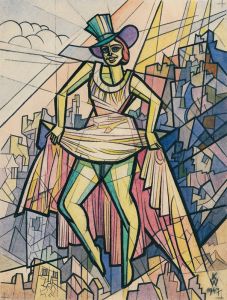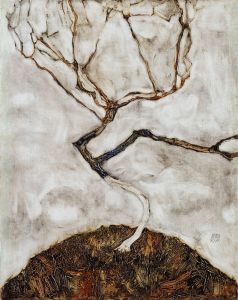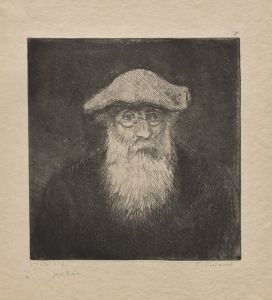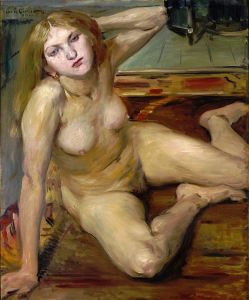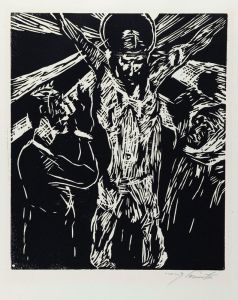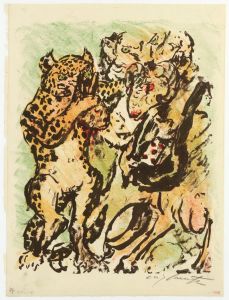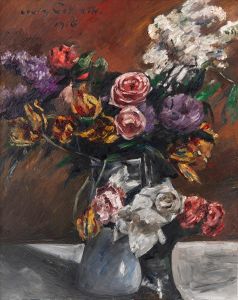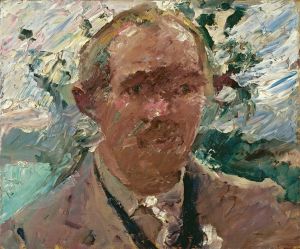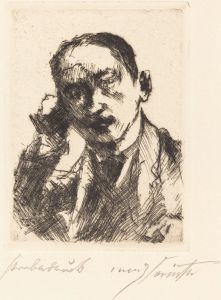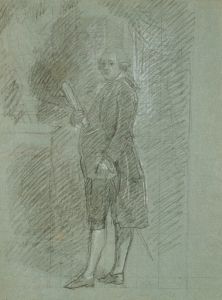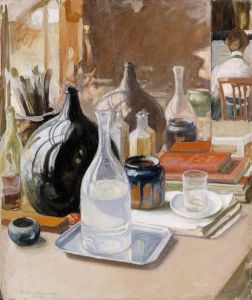
Self-Portrait )
A hand-painted replica of Lovis Corinth’s masterpiece Self-Portrait ), meticulously crafted by professional artists to capture the true essence of the original. Each piece is created with museum-quality canvas and rare mineral pigments, carefully painted by experienced artists with delicate brushstrokes and rich, layered colors to perfectly recreate the texture of the original artwork. Unlike machine-printed reproductions, this hand-painted version brings the painting to life, infused with the artist’s emotions and skill in every stroke. Whether for personal collection or home decoration, it instantly elevates the artistic atmosphere of any space.
Lovis Corinth, a prominent German painter and printmaker, created several self-portraits throughout his career, reflecting his evolving style and personal experiences. One of his notable self-portraits, painted in 1924, stands as a testament to his mature period, characterized by a blend of Impressionism and Expressionism. Corinth's work often explored themes of identity and self-reflection, and his self-portraits are no exception.
Born on July 21, 1858, in Tapiau, East Prussia (now Gvardeysk, Russia), Corinth was a significant figure in the transition from 19th-century realism to 20th-century modernism. He studied at the Academy of Fine Arts in Munich and later in Paris at the Académie Julian, where he was influenced by the works of the French Impressionists. His early works were rooted in realism, but over time, he developed a more expressive style.
The 1924 self-portrait is particularly significant as it was created after Corinth suffered a stroke in 1911, which left him partially paralyzed on his left side. This event marked a turning point in his life and work, leading to a more introspective and expressive approach in his art. The stroke also affected his ability to paint, but Corinth adapted by using his right hand, which contributed to the looser, more dynamic brushwork seen in his later works.
In this self-portrait, Corinth presents himself with a direct gaze, capturing a sense of vulnerability and resilience. The painting is characterized by bold brushstrokes and a vibrant color palette, reflecting his emotional state and the physical challenges he faced. The background is often abstracted, focusing attention on the artist's face and expression, which convey a deep sense of introspection and self-awareness.
Corinth's self-portraits are not merely representations of his physical appearance but are also explorations of his inner world. They reveal his struggles, triumphs, and the passage of time. The 1924 self-portrait, in particular, is a poignant reflection of his determination to continue creating art despite his physical limitations.
Throughout his career, Corinth was associated with the Berlin Secession, an art movement that sought to challenge the conservative art establishment in Germany. His work was well-regarded for its technical skill and emotional depth, and he became a leading figure in the German art scene of the early 20th century.
Lovis Corinth passed away on July 17, 1925, in Zandvoort, Netherlands, leaving behind a rich legacy of paintings and prints. His self-portraits remain an important part of his oeuvre, offering insight into his personal journey and artistic evolution. Through these works, Corinth continues to be celebrated as a master of capturing the complexities of human emotion and the essence of self.






